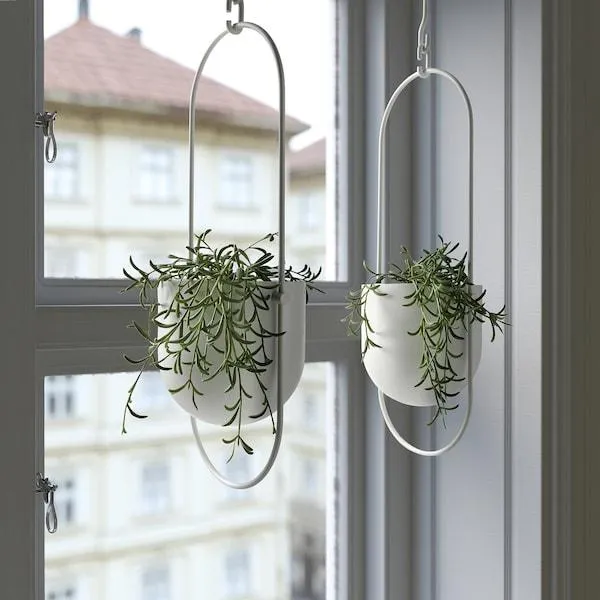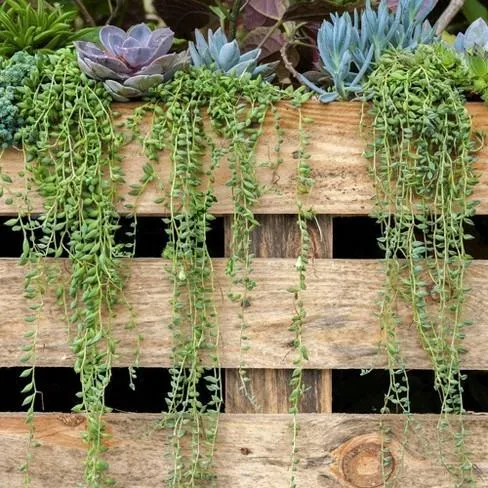Understanding the Phenomenon of Bananas Growing Upwards
When you see a bunch of bananas growing upwards towards the sky rather than hanging down, it can leave you scratching your head in wonder. After all, it seems counterintuitive for any fruit or vegetable to grow against the force of gravity. In this article, I’ll delve into the various reasons behind this curious occurrence and hopefully answer all your questions on this topic.
Why Do Bananas Grow Upwards?
- To Gain Access to Sunlight – Banana plants send their fruits upwards to maximize exposure to sunlight. From my experience as a botanist, plants often evolve traits that help them harness more sunlight for photosynthesis and growth. Reaching towards the sun gives bananas a competitive advantage.
- To Prevent Damage – Bananas hanging down are vulnerable to being damaged or eaten by animals and insects crawling on the ground. By curving upwards, they avoid harm from various threats below. Over time, banana lineages that grew fruits upwards may have had better chances of reproducing.
- Genetics and Hormones – The curvature of banana hands is determined by interactions between the plant’s genetics and certain hormones. As the bananas mature, ethylene and auxin hormones cause them to naturally ripen while arching upwards in a curved growth pattern.
Stages of Banana Development
The upward growth occurs in distinct phases:
- Initially, small banana fingers emerge from the male flower cluster pointing straight down.
- Around 4-6 weeks after flowering, these fingers or “hands” begin to thicken and swell with carbohydrates as the fruits develop.
- Hormonal signals stimulate the banana hands to bend upwards into a characteristic crescent shape over several weeks as they ripen.
From my own gardening endeavors, I’ve observed this banana curvature process up close – it’s quite remarkable to see nature manipulate growth directions so purposefully! While going against gravity may seem abnormal, for bananas it brings clear evolutionary advantages.
Differences Between Cultivars
Not all banana varieties curve upwards to the same degree. Some interesting differences I’ve noticed:

- Cavendish bananas grown commercially have an extremely pronounced upward arc, almost forming a closed circle. This protects them while also packing more fruits densely on the plant.
- Wild banana species tend to bend upwards less drastically. Their clusters dangle at lower angles, possibly due to weaker ethylene responses or genetic dissimilarities.
- Ornamental varieties bred for landscaping stay straighter as aesthetic appeal is prioritized over natural defensive strategies. Their curvature provides structure without obstructing views.
So in summary dawg, bananasGrowth up be because of photosynthesis and avoiding critters. Each cultivar got its own wavy growth patterns too, feel me?
Handling Upward-Growing Bananas
For farmers and home growers, the natural upward swelling pose challenges when harvesting and protecting banana hands:
- Mature clusters need support from poles or strings to prevent heavy bunches from snapping under their weight as they arch away from the plant stalk. Left unsupported, falling fruits could be bruised or damaged.
- Protective coverings are sometimes used to shield ripening bananas from rain and pests. Enclosing the whole curved cluster can be tricky business! Duct tape comes in handy, no lie.
- Picking individual bananas from the top of tight grown rounds requires careful maneuvering in narrow spaces between adjacent bananas. Long stems help gatherers reach the prime spots for plucking.
Basically, working with bananas’ vertical tendencies demands extra precautions. But their yield and taste make the additional labor worthwhile, a small price to pay for such a delicious crop!
Frequently Asked Questions
Why don’t all fruits grow upwards?
Each plant species evolved adaptations tailored to its environment and mode of reproduction. While bananas benefit from upward growth, hanging or sideways orientations suit other fruits better. Apple and grape hyangs allow pollination and dispersal in different ways.

Can bananas grow downwards if planted upside-down?
Attempts show bananas insist on curving upwards no matter their position. Their genetic programming and hormonal signals compel growth pole to point skyward. Upside-down culturing fails to override nature’s blueprint for optimized sun exposure and safety from ground threats.
Does the direction bananas grow impact taste or nutrition?
No evidence proves upward curvature influences flavor or nutrient composition. Banana varieties maintain consistent tastes whether hanging low or high. Their growth form mainly impacts crop yield and protection from external forces like weather rather than internal fruit qualities.
In conclusion, while bananas arching skyward may initially seem peculiar, upon closer examination we discover sensible reasons behind this trait which enhanced their chances of survival and reproduction over evolutionary time. Though defying gravity, for bananas upwards remains the natural and advantageous direction of development. I hope this helped explain the interesting phenomenon you observed! Let me know if any other questions come to mind.
Choosing the Perfect Banana Bunch

| Length | Firmness | Color | Flavor |
|---|---|---|---|
| 6-12 inches | Gentle pressure yields slightly | Mostly yellow with hints of green | Sweet and aromatic |
| Over 12 inches | Very firm, does not yield at all | All green | Starch and lacking in flavor |
| Under 6 inches | Too soft, dents easily | All yellow | Dull flavor and texture |
| Regular intervals | Consistent from banana to banana | Gradual color transition along bunch | Well balanced and satisfying |
| Various sizes | Inconsistent firmness across bunch | Not a uniform ripening | Flavors won’t develop together |
FAQ
-
Why do bananas grow upwards instead of sideways or downwards?
Basically, bananas grow towards the sky because that’s where sunlight comes from. They need sunlight to produce energy through photosynthesis. It’s kinda like how trees and plants reach for the sun. So upwards it is!
-
Do bananas always grow upwards no matter what?
Not necessarily. Sometimes environmental conditions can cause bananas to grow at an angle or even sideways. For example, strong winds might push seedlings off course. Or if a plant is squished between other ones, it may veer off to the side to find more space. So while most bananas head skyward, there are exceptions now and then.
-
How do banana flowers know which way is up?
Botanists aren’t 100% sure, but it appears banana flowers have a built-in sense of gravity. According to research, cells on the bottom side of a flower stem are more sensitive to gravity than those on top. This helps the stem hook towards the skies from the get-go. It’s like bananas have a biological compass! Pretty amazing if you ask me.
-
Can bananas grow upside down?
Most banana experts say no, bananas can’t naturally sprout with their stems pointing towards the earth. However, Australian scientist Dr. Bruce Pearson has some bananas he got from Hawaii that are growing the wrong way round. When asked how, he shrugged and said “Your guess is as good as mine, mate!” So I guess anything is possible with those crazy bananas.

-
Do other plants grow upwards too?
As a matter of fact, most plant life heads skyward just like bananas. Trees, shrubs, vines – they know sunlight is key. Some exceptions burrow underground, like carrots and potatoes, but even their leaves peek out above soil to photosynthesize. So you could say reaching for the stars is a pretty universal trait in the plant kingdom.
-
What would happen if bananas grew down instead?
If bananas bucked the norm and pointed south, it would be utter chaos! The fruit would pile up underground instead of dangling above. Plus, with no sun exposure, bananas might not ripen properly. They’d probably end up mushy and gross. Banana farmers would be in big trouble. So thankfully, evolution knows best – upwards growth it is!
-
Is there any benefit to upside down bananas?
Hmm…you’ve got me stumped on this one, friends. As far as I know, inverted banana plants would be profoundly disadvantageous. But who knows, maybe some wacky banana mutation could adapt. Scientists should get cracking on growing bananas every which way to see what they learn. There may just be an upside to upside down! Stranger things have happened.
